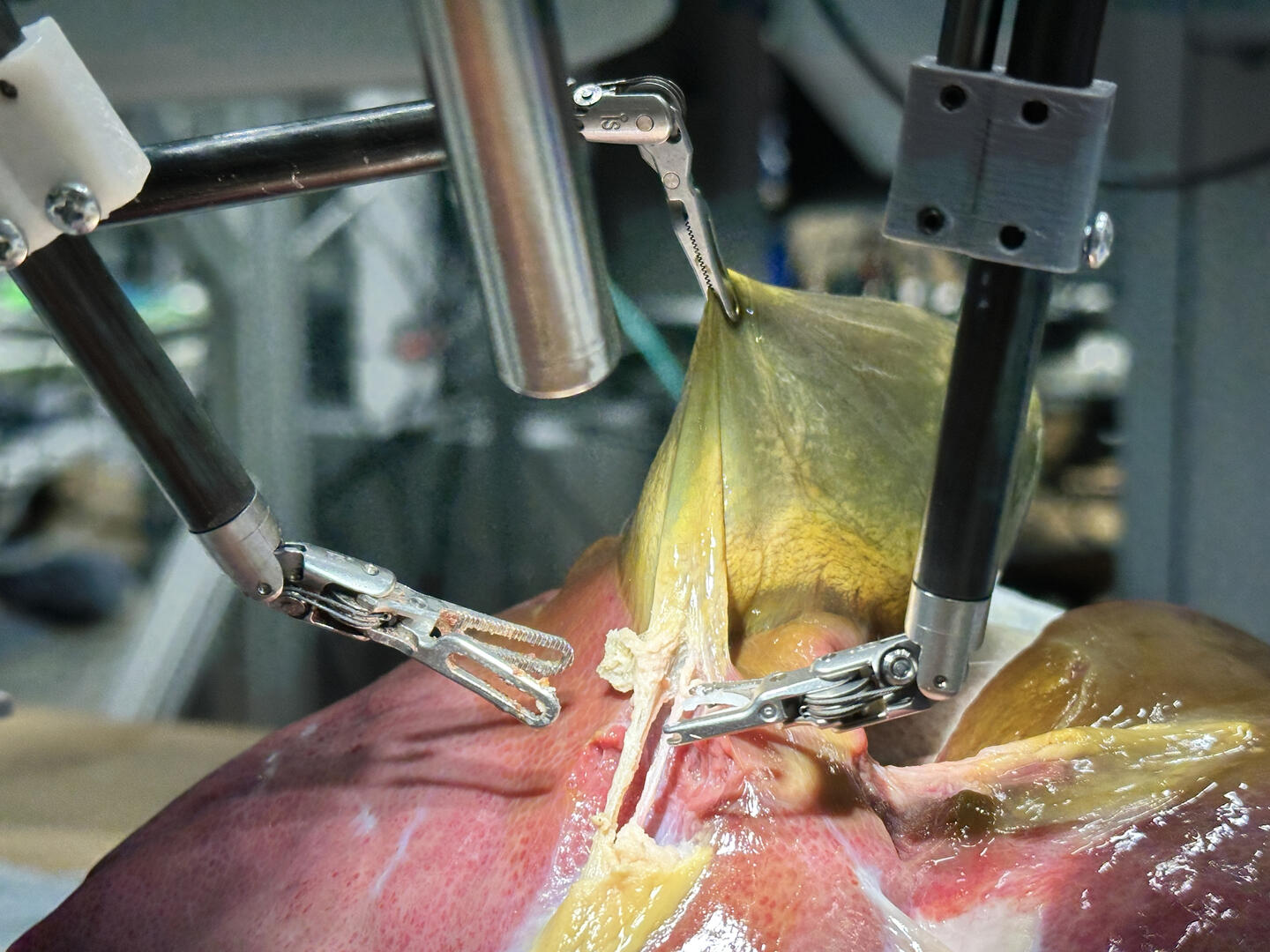By futureTEKnow | Editorial Team
The world of robotic surgery is on the verge of a major transformation. Recent breakthroughs have brought us closer than ever to fully autonomous surgical robots, powered by advanced AI systems trained on thousands of hours of human expertise. This shift could redefine how surgeries are performed, improve patient outcomes, and reshape the role of surgeons in the operating room.
“Current surgical robotic technology has made some procedures less invasive, but complication rates haven’t really dropped from previous laparoscopic [keyhole] surgeries [by human surgeons],”
says team member Axel Krieger at Johns Hopkins University in Maryland.
A major milestone was recently achieved when a robot, powered by a two-tier AI system, performed a critical phase of gallbladder removal surgery on a dead pig without any human help. This experiment, conducted on a pig cadaver, demonstrates the system’s ability to operate in realistic anatomical conditions, closely mirroring the complexity found in human patients. The AI was trained on hours of surgical video, analyzing thousands of expert motions, enabling the robot to independently execute intricate maneuvers and marking a significant step toward full autonomy.

The secret sauce behind these cutting-edge robots lies in their multi-layered AI architecture. By learning from thousands of real-world surgical actions, the system can:
Recognize and replicate complex surgical motions
Adapt to subtle changes in tissue and anatomy
Make split-second decisions based on real-time data
This approach moves beyond simple automation, enabling robots to perform tasks that previously required the intuition and dexterity of a human surgeon.
Autonomous surgical robots promise several game-changing benefits:
Improved patient outcomes: AI-guided robots can reduce complications, enhance recovery, and minimize errors.
Shorter hospital stays: Precision and consistency lead to faster healing and fewer readmissions.
Reduced surgeon fatigue: Robots can handle repetitive or physically demanding tasks, allowing surgeons to focus on complex decision-making.
Addressing staff shortages: As healthcare systems face growing demand, autonomous robots could help fill critical gaps and reduce delays.
Despite the excitement, several hurdles remain before we see widespread adoption of fully autonomous robots in the OR:
Technical complexity: Achieving higher levels of autonomy requires advanced perception, real-time adaptation, and seamless integration with hospital systems.
Regulatory oversight: New standards are needed to evaluate safety, efficacy, and ethical considerations as robots take on more responsibility.
Cost and accessibility: Cutting-edge systems are expensive, and ensuring equitable access across healthcare settings is a major concern.
Ethical questions: Patient safety, data privacy, and the risk of bias in AI algorithms must be addressed to build trust in autonomous systems.
For now, human expertise remains at the heart of surgical care. Even as robots become more capable, they are designed to augment—not replace—surgeons. The near future will likely see a hybrid approach, with AI-powered robots handling specific tasks under the watchful eye of skilled professionals.
As research continues and technology matures, the promise of autonomous surgery is becoming more tangible. The coming years will be pivotal in determining how these innovations reshape the operating room and, ultimately, patient care.

Bridgit Mendler’s Northwood Space is pioneering mass-produced ground stations, enabling scalable, high-speed connectivity for the new era of satellite networks and megaconstellations.

SpaceX aims to nearly double launches from Vandenberg in 2025, facing support from federal agencies but strong objections from the state and local communities.

Traditional Medicare will pilot AI-assisted prior authorization in 2026 across six states, focusing on high-risk outpatient services. Clinicians retain final say, but incentives and access concerns loom as CMS tests fraud reduction and “gold card” exemptions. Here’s what providers and patients should know.

OpenArt’s new “one-click story” compresses scripting, visuals, and edits into ready-to-post short videos—fueling viral growth and a fresh IP debate. We break down how it works, adoption signals, what’s next (multi-character, mobile), and practical guardrails creators and brands should follow to stay original and compliant.

OpenAI’s o3 swept the Kaggle AI chess tournament, defeating xAI’s Grok 4–0. The victory fueled the intense rivalry between Altman and Musk, reshaping AI benchmarks.

NASA and Google’s AI-powered Crew Medical Officer Digital Assistant enables autonomous diagnoses for astronauts on Mars missions, redefining remote healthcare for space and Earth.

Pinterest’s CEO confirms that fully agentic AI shopping is years away, as the platform invests in AI-powered tools to enhance discovery, inspiration, and personalized shopping experiences for millions.

Shopify’s new AI shopping tools are transforming e-commerce, letting agents and chatbots deliver smooth, personalized shopping and checkout experiences across platforms. Learn how these innovations reshape online retail.

Meta has acquired WaveForms AI, a startup pioneering emotion-detecting voice technology. Learn what this means for Meta’s AI voice ambitions and the future of AI audio.

Tracelight is revolutionizing financial modelling for finance professionals with AI-powered Excel tools that automate complex tasks, reduce errors, and unlock new analysis capabilities. Learn how this next-gen solution changes the future of spreadsheets.

China’s Lanyue lander completed its first major test, showcasing advanced engineering for safe, crewed moon landings before 2030. Explore how this milestone shapes the space race.

Microsoft rolls out GPT-5 across its Copilot suite, integrating smarter AI for enterprise and personal users. Discover new features, free access, and what sets this launch apart.
To provide the best experiences, we use technologies like cookies to store and/or access device information. Consenting to these technologies will allow us to process data such as browsing behavior or unique IDs on this site. Thanks for visiting futureTEKnow.